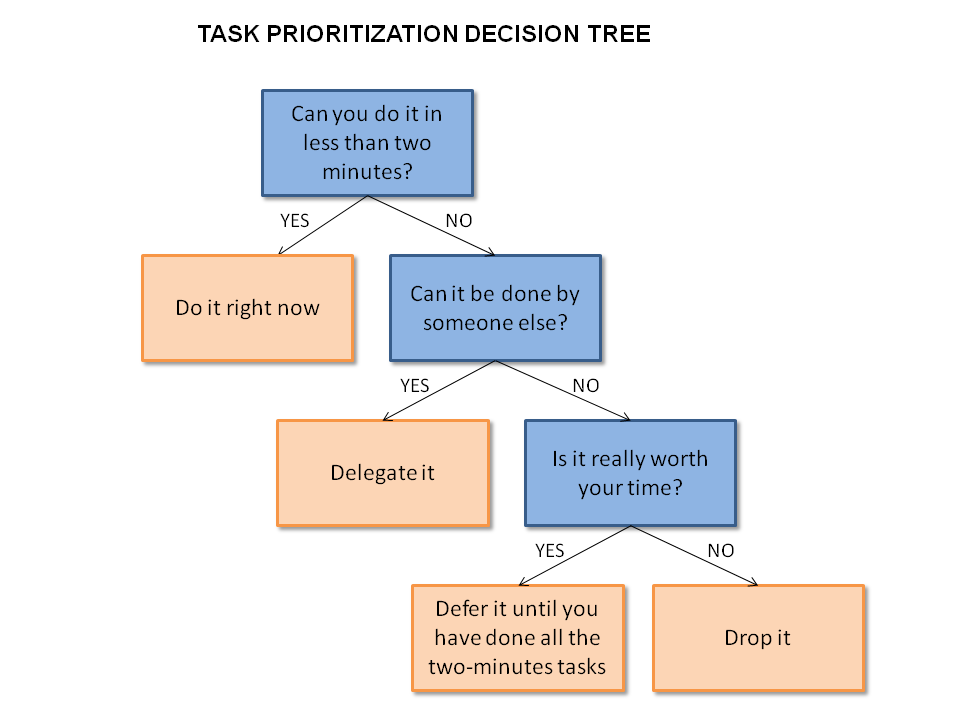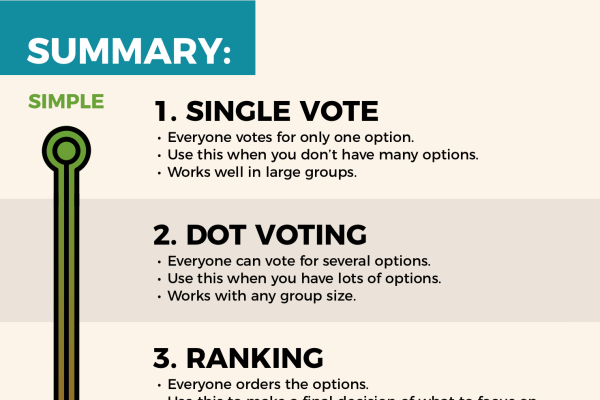
Easier and faster decisions are possible
Francesco Marcatto5 Sep 17
Table of contents
Complex decision making techniques can be very helpful for effective prioritisation, but they have the serious drawback of being too complex to be actually used. It begs the question, how sophisticated do the techniques actually need to be for effective prioritisation? The reality is that professionals usually rely on their experience, intuition and very simple techniques to great effect.
Decision making remains one of the most challenging parts of running a business, from deciding what to focus on next through to a 2-year strategy. In startups, for example, it’s often the question: do we hang on and keep trying our current strategy or do we give up and pivot to a new one?
In psychology, prioritisation is a challenging cognitive process and there is research going on in fields such as cognitive psychology, engineering, and organisational behaviour that tries to understand how people prioritise tasks, and what strategies can be adopted to obtain better results. One of the most compelling finding in the study of actual decision making is that humans already have in built ‘heuristics’ that guide our instinct, and if you consciously learn some less obvious heuristics you can make decisions in a fraction of the time and still as well or better than using complex models.
The difficulties with complex decision making processes
Take the classic decision matrix strategy. There are three main ways it falls down in the real world:
The first is we operate in an uncertain environment. The more uncertainty you have, the more your evaluations and forecasts will be inaccurate. Although it seems to yield an objective output, most of the information needed consists of subjective judgments, so it’s no more objective than you are.
The second is, it’s slow and complex. Even with the aid of a software that will do the calculations, you still have to make a lot of judgments and decisions which are high in cognitive load so tire you out.
The third is, we don't necessarily trust it and so, if the final ranking is the same or very similar to the one you would have obtained intuitively, then great, your gut feelings were right (but it begs the question why are you doing it in the first place?), otherwise, if your results don’t sound right, you adjust them to your own intuition anyway. This is confirmation bias hidden behind the adoption of a seemingly objective method.
How do humans really make decisions?
In the real world, people are faced with ill-defined problems with no strategies to guarantee the optimal solution. Probabilities and utilities are often unknown, and nevertheless, they need to act and decide fast, relying on instinct and experience. This happens almost every day in any business, and certainly in start-ups. What we call instinct can go by another name: unconscious heuristics.
What is a heuristic?
Let’s imagine that you are hiking in the mountains without a map when you find yourself at a fork in the path: what do you do? Most people will look around for a few seconds, and then take the trail that goes more uphill. You can’t be sure that it’s the right trail, but it’s the best guess in a situation where key information is missing e.g. the knowledge of the trail or a sign and it's better than being stuck at the crossroad, choosing at random, or having to return back home.
Heuristics are 'good enough' strategies that usually perform very well in the real world. They're simple rules you have, often unconsciously, in your head that help you make decisions. Most of the time they work very well and save time, resources, and let us act and decide fast and in situations where the complete information is not available or it would be too costly to reach.
Can you learn heuristics?
Experts can develop slightly more complex unconscious heuristics for decisions in their domain of expertise, and these heuristics have been found to perform very similarly to complex rules while requiring just a fraction of the time and cognitive load.
Heuristics are mainly what we could call ‘intuition’, ‘hunch’, or ‘gut feelings’, there are however some smart heuristics that are not innate and that we can learn to use deliberately for faster and better decisions.
One example is the triage system in medicine, which is basically a heuristic strategy for patient prioritisation.
Two useful heuristics used by experts
‘Take the best’ and ‘Tallying’, for example, are two very simple decision making heuristics that have been proven to yield similar or better results than more complex analytical methods such as the decision matrix, multiple regression, classification and regression trees.
'Take the best' (also known as the Lexicographic heuristic) is a simple one-reason decision making strategy: first identify the attribute that is most important (eg., expected return, number of people who requested this feature, time needed to complete, etc.), then choose the option with the best value for this attribute. If there is a tie, do the same with the second most important attribute and so on. This heuristic is very useful when one attribute is much more relevant than the others.
'Tallying' can exploit situations where you have to take into account multiple attributes. The 'Tallying' heuristic consists in selecting the attributes that are relevant for the decision, scoring each option on all the considered attributes, and then choosing the alternative with the higher sum of scores. It's a simple version of the decision matrix so much easier to do.
Using heuristics for prioritisation
By linking together multiple heuristics it is possible to create new fast and frugal algorithms for facing new situations.
For example, using the 'Take the best' heuristic you can build this simple but very effective decision tree for task prioritisation (as proposed in The Organized Mind book).

Get learning heuristics!
The deliberate adoption of smart decision making heuristics could be an effective way to improve prioritisation at work. Research shows that people not only can easily learn to use heuristic decision tool, but they also like to use them and are satisfied with the results because they are perceived as transparent and correspond to their own intuitions.
As Payne and Bettman wrote, ‘although heuristics may not be optimal strategies in the narrow sense of decision accuracy alone, they may be a reasonable way to solve many decision problems’. And this is especially true in complex environments such as product development and business in general: the larger the uncertainty, the greater the benefit of heuristics.







